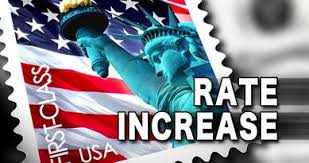November 3, 2017
(Note: The USPS is not requiring nonprofits to change their mailpiece indicia from Nonprofit to Marketing Mail.)
Leaders of the U.S. Postal Service have been asking recently why Marketing Mail volume has been declining. They expect and predict declines in First Class Mail, but not in MM. Nonprofit MM is declining in volume because of above-inflation rate increases for the most common types of mail used for fundraising.
We can answer for the nonprofit sector that accounts for about one-fifth of all MM volume. We focus on Nonprofit Letters that represent 75 percent of all nonprofit volume, the other categories being Flats, Parcels, High Density, and Saturation.
Most charitable fundraising via direct mail relies on letters. And, for larger nonprofits at least, most MM letters are highly presorted and drop-shipped, through private sector work-sharing.
Nonprofits enter each year with a set fundraising budget that has been approved by their leadership, staff, and volunteers. There is no wiggle room for change. Additionally, nonprofits are evaluated by external, independent organizations that rate charities. An example is Charity Watch. The most prominent and limiting metric used by charity evaluators is described by Charity Watch this way: “Program % reflects the percent of total expenses a charity spent on its programs in the year analyzed. For example, a Program % of 80% means that the charity spent 80% of its expenses on charitable programs. The remaining 20% was spent on overhead, which includes fundraising, and management & general.”
When USPS increases postage, it directly affects the amount the nonprofit is spending on overhead. Budgets are set to ensure the nonprofit stays within the recognized watchdog organizations’ recommended expenditures for overhead. When an increase in postal rates is well above a developed budget, the nonprofit has no choice but to cut back its mail volume.
Fundraising is a large and prominent component of the “overhead” category that is viewed by external evaluators, and by extension donors, who expect overhead to be kept at or below the acceptable maximums. Overhead, and therefore fundraising expense, must be limited to remain a viable nonprofit. And for some of our members, who depend greatly on revenue generated through the mail, postage is the largest component of fundraising expense.
For many nonprofits, direct mail is the most effective way to raise funds. Ergo, nonprofits are probably the customer segment most loyal to the USPS. And Household Diary Studies, as well as other surveys, have shown that a majority of households likes to receive mail from their favorite charities as well as new ones they might consider.
Here’s the big but: if a nonprofit’s revenue increases by 2 percent, and the kind of mail it uses for fundraising goes up 4 percent, this loyal USPS customer has no choice but to cut its mailing for the coming year. This will automatically reduce its own donor revenue in the coming year from what it would have been if it had mailed more.
We reported this time last year that USPS raised work-shared nonprofit MM letters by much more than the inflation cap of less than 1 percent. In 2017, DNDC letters went up 2.8 to 3.2 percent, and DSCF letters rose 4.2 to 4.3 percent.
The 2018 story is even worse. That’s because USPS made a big difference between its loyal nonprofit fundraisers and commercial advertisers. Overall, nonprofit MM letters will go up an average of 4.381 percent, while commercial will rise only 1.660 percent. The Postal Service compounded the negative impact on nonprofits by continuing to hit the most work-shared letters the most. DNDC increases will range from 2.1 to 5.5 percent, while DSCF will go up 5.0 to 6.7 percent.
A mail service provider who serves many nonprofits recently ran the following postage impacts for specific mailings. This is going on throughout the nonprofit world. Service providers work with clients to try to reduce the negative impact, for example by using co-mingling. But even with enhancements, we are still facing typical increases in the 5 percent range. The next part of the discussion is: “How much do we cut our 2018 fundraising mail?”
So, Dear Postal Service, you are causing the drop on Marketing Mail used by loyal nonprofit customers yourself through your pricing. Remember, it’s much easier and cost-effective to retain loyal customers than to attract new ones!





Leave a Reply